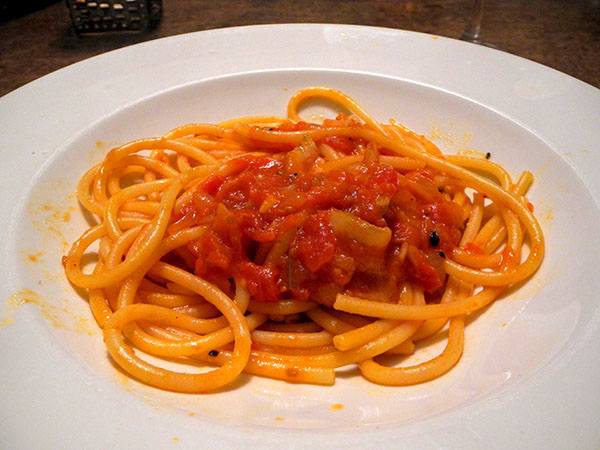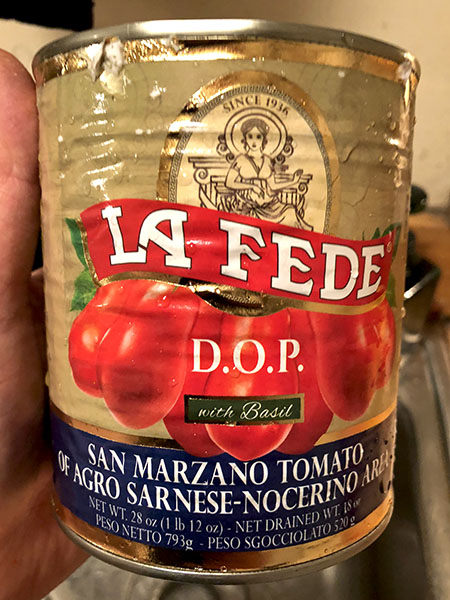
We’ve been enjoying sugo all’amatriciana for decades, but I’m only now beginning to understand how many subtle variations there are to this classic Italian, or Lazio (Roman?) dish, in spite of the fact that its components can almost be counted with the fingers of one hand.
I went with Kyle Phillip’s recipe this time. He writes, “Roman versions tend to use bucatini..”, and that’s what I used, 10 ounces of Setaro Bucatini from Buon Italia, mostly because, of the pastas I had, it was the closest to spaghetti, which is probably the more usual choice. I used a ‘pancetta pepato‘, also from Buon Italia, substituting for the customary guanciale (cured pork cheek); a Sini Fulvi pecorino cheese from Romano, and not Amatrice, from Chelsea Whole Foods Market; true Italian San Marzano tomatoes, like the cheese, La Fede D.O.P. dell’Agro Sarnese, also from Chelsea Whole Foods Market*; whole black pepper, ground fresh; sea salt from the French Mediterranean coast,; and 2 small dried chili peppers, peperoncino Calabresi secchi, from Calabria via Buon Italia. I also used local garlic, Sicilian Rocambole, from Keith’s Farm, and a little local sweet yellow onion, from Norwich Meadows Farm, both of which which would apparently be condemned in Amatrice itself, and I didn’t use any white wine this time, an omission which it seems would also offend some purists.
*Ah, those tomatoes.

I’m going to try to remember to go with the classic formula next time (wine, but no garlic, and no onion), and I’ll compare the two, if I can remember well enough what this one tasted like.
It’s interesting that three of Rome’s classic pasta dishes, Gricia, Amatriciana, and Carbonara, are so closely related, despite being very distinctive in taste. I’ve prepared two of them recently; I expect to move to a Carbonara, the most modern of the 3, in the near future, to complete the trilogy.
- the wine was an Italian (Campania) red, Mastro Aglianico Campania IGT 2106, from Philippe Liquors
- the music was Monteverdi’s 1607 opera, ‘L’Orfeo’, John Eliot Gardiner conducting the English Baroque Soloists, the Monteverdi Choir, and His Majestys Sagbutts and Cornetts, with the soloists Lynne Dawson, Anthony Rolfe Johnson, Anne Sofie von Otter, and John Tomlinson